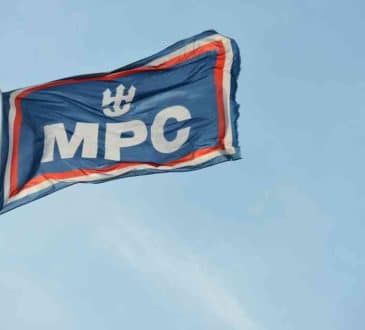Life’s Too Short: It’s Time To Live Stupendously – The Larapinta #2

“I’m getting a little nervous about contracting EOMB”
In May 2022, in order to ‘Live Stupendously‘, I will be walking The Larapinta trail in Central Australia: 107km over 6 days, 10-12 hours of walking each day; in 23-27 degree celsius heat.
This goal is part of my Life’s Too Short bucket list which I made when my ex husband passed away last year. One of my Bucket List goals is to do one incredible ‘first for me’ every year – whereby each and every year I will open a brand new door and challenge myself to do something that massively stretches the limits of my comfort zone.
And this year it’s The Larapinta.
The trip commences in 5 weeks and I’m not going to lie – I am getting a little nervous about contracting “EOMB”. I’ll explain more about that horrendous condition shortly, but first, here’s how the prep is going…
I have recently discovered that – just like childbirth – everyone has an opinion on what you should/ should not do when it comes to The Larapinta. And just like an expectant mother facing up to childbirth for the first time, I have taken a scatter gun approach to asking advice from literally everyone I encounter: the bloke at the hardware store; the teenage trainee at the camping shop; the women I swim with; the folks in the queue at the supermarket; the guy who fixed my car; and of course the legions of readily available ‘experts’ on Facebook.
Having waded my way through their well intentioned (but perhaps not so well informed) advice, I have finally settled on 4 trusted ‘experts’.
Expert #1: The First Aid Guy
As a fair bit of the ‘non expert’ advice I have received revolves around snake bites, dehydration, and vomiting up the flies you swallow on mass, tapping into some genuine first aid expertise seemed like a good place to start.
Enter Scott Brown from Rural and Remote First Aid. Scott works with some of the largest outback stations and pastoral companies in Australia across a 3 million acre span. He can spend up to 5 months of the year on the road teaching basic first aid through to full blown crisis medical aid. When you live and work on a remote station that is a minimum of a 4 hour flight away from medical care in the form of the Royal Australian Flying Doctor Service, it is absolutely imperative that you understand exactly how to deal with crisis first aid. And that’s where Scott comes in – he teaches farm managers and workers how to keep each other alive until the Flying Doctor arrives.
Here is what I leaned from Scott about hiking in central Australia (and which has been somewhat the cause of nightmares…):
- Dislocated knees and ankles represent a significant risk.
- Heat stroke has a 57% mortality rate – if you wait until you are thirsty you are already severely dehydrated.
- Snake bites are a risk – the King Brown comes in at 2m+ with enough venom to kill 10 people (all I can think is, I hope I’m number 11…).
- The Larapinta is steep and rocky, so a fall can be catastrophic.
- Most medical extractions will take several hours to overnight, which brings other risks into play such as hypothermia.
And while all of this was alarming, it was the threat of “EOMB” that really pushed me over the edge.
According to Scott, “EOMB” stands for “Early Onset Mud Bum”, a condition which can apparently occur after a number of days of doing poo in the bush without the ability to take a shower…and the residue builds up and…I will leave the rest to your imagination.
I am still not sure if he was joking. In any event, on Scott’s recommendation I have purchased bio-degradable baby wipes.
Expert #2: The Personal Trainer
I am very lucky in this respect as my sister Emma Ferris (@emmaf.erris) happens to be an amazing PT with a focus on working online via Zoom with women over 40. Here’s what I took from her:
- Mix it up: walk a lot, swim, cardio, isometrics training (so not my favourite…)
- Work every part of your body – your legs will do most of the muscular work, but you need strong glutes, thighs, a super toned core, strong shoulders for the pack, and power arms for leveraging the walking poles (*more on poles below)
- Exercise 4 times a week. Take breaks and let your body recover.
- Build up your walking fitness to the point where you are very comfortable with 10-15 km distances.
- Walk with your day pack carrying the equivalent of 3-5 kilos; you do not want the first time your wear your pack to be the first day of the epic trek.
Expert #3 The Podiatrist
I am already a walker. I love walking. I walk a lot.
However, based on the advice from Expert #2, I have upped the ante on my walking. This ultimately resulted in a sore right foot – hence a visit to the Podiatrist – a previously very under-rated medical professional in my humble opinion.
Turns out I have an issue with my perennial tendon, which is slightly annoying, and although not debilitating, if left untreated could flare up on the epic trek and annoy the absolute s**t out of me.
Foot strapped. Rehab complete. Orthopaedic shoe insert inserted. And a delightful combination of voltaren gel and hemorrhoid cream applied and then wrapped in cling film to reduce swelling. Who knew!?
Expert #4 The Outdoor Equipment Supplier
Scotty (aka Expert #1) provided a number of recommendations for the equipment we would need for the epic trek. It is really important to get the equipment right, as it can literally make or break the whole deal. I have spent hours (and a fair bit of cash) on this, and with the help of a number of different outdoor equipment experts, here is a list of the main items I have purchased:
- Day pack: lightweight, durable and apparently ‘designed with optimal stability for dynamic movement even on the most technical terrain’. This baby comes with 6 pages of instructions – cost $299.95
- Trail hiking boots: also lightweight but with super sonic grippy grip stuff on the soles (my technical jargon as I have lost the instructions) to help avoid slippage etc – cost $180
- Hiking poles -despite the fact that the poles make you look like you are 180 years old, according to Scotty they reduce the stress on your back by 25% and offer massive stability on the slippery Larapinta surface – cost $140
- Hydraulics Reservoir – aka ‘a water bladder’: too many instructions to even know where to start – cost $74.95
- Very ugly legionnaires style cap to keep flies and sun off face and neck – cost $41.50
- 3 pairs wool hiking socks – cost $35 each ($35 per pair?! Are you serious? Are they made from spun gold?)
- Moleskin pre cut blister kit – Scotty advises you slap those babies on even before you start to feel the tingle of a promise of a blister. My pack contains 28 units – you can never have too many, right? – cost $14.95
- 1 x Anti-Chafe Balm – no explanation necessary – cost $14.95
- 2 x biodegradable Wilderness Wipes – aka ‘baby wipes’ and absolutely essential for avoiding EOMB, also good for wiping pits and bits – cost $4.55
- 1 x fly net – I am not getting any of those dirty little buggers in my mouth – $4.99
- 1 x head torch – to find somewhere to wee in the wee hours – $4.99
- 1 x ankle gators – to stop pebbles/ rocks and spinifex getting into your socks. Some people use them to protect from snake bites, but according to Scotty, any snake that you have the misfortune of being attacked by is likely to have such long, sharp fangs that they could get through your boots let alone some flimsy, cotton gators. Thanks Scotty – you are a wealth of knowledge – cost $5.
And so there you have it. Experts engaged. Advice followed. Money spent. Planning well underway.
Written by Kate Christie.
Have you read?
Flexibility at work – it’s more than just work from home by Joanne Alilovic.
Market Potential, Scalability, Sustainability and Performance: The Four Metrics of Competitive Advantage by Richard Hawkes.
Democracy is Required for Business to Thrive by Lisa Gable.
Manage your energy rather than your time to boost your wellbeing and performance by Fleur Heazlewood.
Add CEOWORLD magazine to your Google News feed.
Follow CEOWORLD magazine headlines on: Google News, LinkedIn, Twitter, and Facebook.
This report/news/ranking/statistics has been prepared only for general guidance on matters of interest and does not constitute professional advice. You should not act upon the information contained in this publication without obtaining specific professional advice. No representation or warranty (express or implied) is given as to the accuracy or completeness of the information contained in this publication, and, to the extent permitted by law, CEOWORLD magazine does not accept or assume any liability, responsibility or duty of care for any consequences of you or anyone else acting, or refraining to act, in reliance on the information contained in this publication or for any decision based on it.
Copyright 2024 The CEOWORLD magazine. All rights reserved. This material (and any extract from it) must not be copied, redistributed or placed on any website, without CEOWORLD magazine' prior written consent. For media queries, please contact: info@ceoworld.biz
SUBSCRIBE NEWSLETTER








